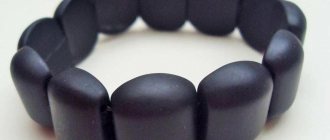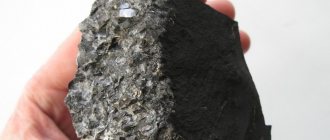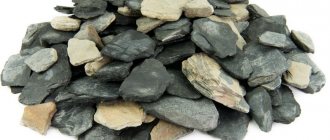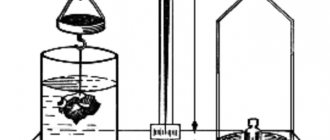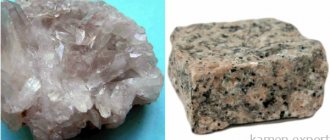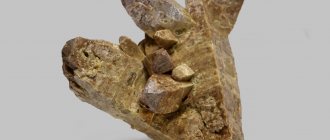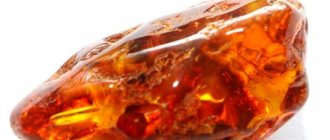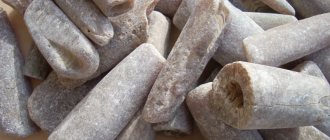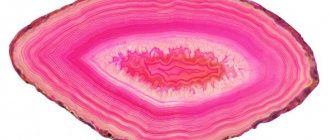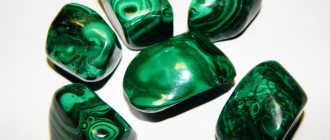Nature reproduces unique gifts that give people powerful energy. Real shungite is a stone whose healing and magical properties have a long history.
The mineral is not classified as precious, but lovers of jewelry with stones of natural origin highly value it for its presentable color and beneficial effects. The main advantage of the gem is its effective water purification.
History of the stone
The mineral was first mentioned at the dawn of the 16th century: chroniclers call it slate (viper) stone. Synonyms: “slate stone”, “touch stone”, lydite or paragon.
"Royal" mineral
The history of shungite is intertwined with the destinies of the rulers of Rus'. The first was Ksenia Romanova. She was sick and barren, and the king exiled her to the Tolvui monastery, famous for its healing spring. The water saved the queen: soon the heir to the throne, Mikhail Romanov, was born.
The source was appreciated by Peter the Great. Following the example of Europe, the Marcial Waters resort was created around it to improve the health of the military.
However, the death of the king was the end of the resort. “Waters” was only revived in the 1960s.
Studying the stone
The properties of the rock have been of interest since the end of the 18th century. The beginning was made by academician Nikolai Ozeretskovsky, who described the stone in detail. Half a century later, in 1848, the work was continued by military mining engineer Nikolai Komarov.
It was named shungite in 1877 by geology professor Alexander Inostrantsev - in honor of the Zaonezh village of Shunga, where the mineral was found.
In the 1930s, government organizations researched the mineral as a replacement for coal.
Confession
The mineral's finest hour came in the 1990s.
A group of scientists created fullerenes in the laboratory, for which they were awarded the Nobel Prize in 1996. However, these rare and structurally unique carbon compounds were found in the Russian mineral shungite.
Variegated mix
"Olonets Cherned" was obtained by peasants from the mineral. It was an extremely durable black paint. It was used to paint artillery pieces.
The name “shungite” first appeared in Lectures on Geology, given by Professor A.A. Foreigners.
There is an “exotic” version of the origin of shungite. V. Kovalevsky (head of the laboratory of geology and technology of shungites), who has studied this rock for almost forty years, speaks about it.
“Scientists do not argue with the fact that the carbon of meteorites and the carbon of shungites are one and the same.”
Petrozavodsk. The Military Medical Academy of St. Petersburg has set up a “shungite ward” within its walls. Doctors use it to speed up treatment, reduce electromagnetic radiation, relieve the effects of stress and psychophysiological stress.
Shungite can be used to make conductive and bactericidal paints!
Near the village of Shunga, the same Petrovsk shungite mine still exists. And, according to rumors, black diggers are still finding something in it.
There is a lake on the territory of the shungite quarry. And you can swim there. They say skin diseases disappear without a trace.
Herr Peter
It is unknown when they would have reached the slate stone if not for Tsar Peter.
The king's orders were mostly carried out. But here is one interesting fact described in the book by M. Filippov “Shungite-bearing rocks of Karelia”.
“In 1736, a free trader, Ivan Glukhov, applied to the St. Petersburg Berg Directorate. Weeping with burning tears, he submitted an application for the development of the rabble of the Baryzhentsy ridge, “under the threat of the sovereign’s cruel wrath, urgent corporal punishment, death penalty and deprivation of all estates, like an unruly despiser of Peter’s orders” for concealing deposits of combustible land, known among the population of the Olonets region even since the time of the Ushkuiniks, that is, almost from the half of the 14th century.”
Peter needed a strong Russia...
Legend
About how Tsar Peter ordered each soldier to carry a piece of shungite in a flask of water. Therefore, Russian soldiers did not suffer from dysentery. The bactericidal properties of slate stone have been proven. And dysentery in war is a terrible thing. But the Swedes did not have shungite, and the disease plagued them. Well, think for yourself what a war is like when you’re sitting in the bushes...
So shungite helped win the war with the Swedes.
